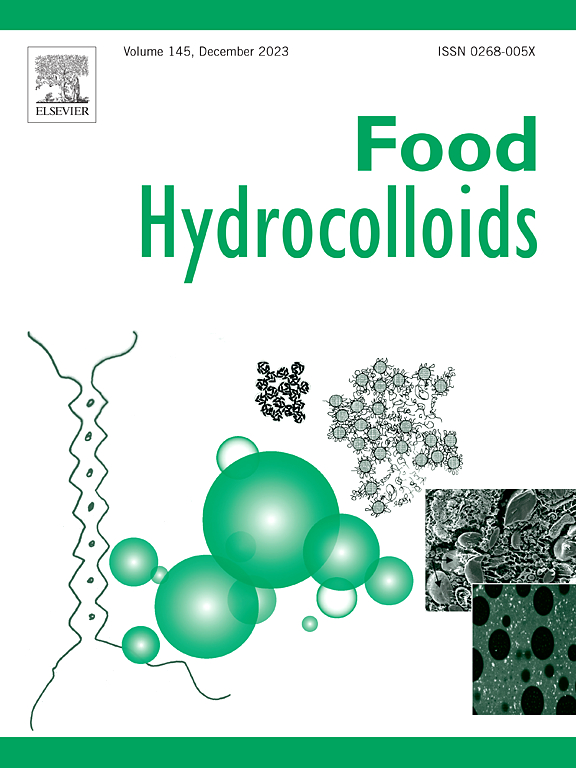Ultrasound-induced gelation of proteins in plant-based milk: Structural modifications, rheological properties and network formation mechanism
IF 11
1区 农林科学
Q1 CHEMISTRY, APPLIED
引用次数: 0
Abstract
The growing demand for plant-based non-dairy milk alternatives has driven the development of new formulations with improved technological properties. A key challenge in this area is enhancing the versatility of plant-based products by structuring these colloidal systems to form gelled matrices. This structuring enables the production of innovative food products with diverse textures and applications. In this study, high-intensity ultrasound (HIUS) was investigated as a dual-purpose technology, capable of both microbial and enzymatic inactivation, particularly targeting lipoxygenase, while simultaneously promoting the structuring of gel networks in plant proteins. Almond-based non-dairy milk was selected as the model system to explore the potential of HIUS-induced gelation in achieving novel food textures. In this context, the effects of HIUS energy intensities at 6.3, 15.9, 25.5, and 36.0 W/cm2 were investigated. HIUS processing altered the secondary and tertiary structures of almond proteins, leading to changes in solubility, molecular weight, and the formation of structured protein aggregates. This reorganization modified the rheological behavior of the almond-based milk, increasing viscosity and imparting gel-like characteristics at higher intensities. Simultaneously, HIUS partially inactivated the enzyme lipoxygenase, reduced microbial contamination to safe levels, and slightly altered the fatty acid profile. The mechanism of this phenomenon was described as alterations in α-helix regions of proteins, resulting in chain organization and the formation of new intermolecular interactions. Consequently, a protein gel network was structured, kinetically stabilizing the system, modifying rheological properties, particle size distribution, and entrapping phenolic compounds. These findings highlight the potential application of HIUS as a tool for creating new plant-based foods with desirable textural properties.

求助全文
约1分钟内获得全文
求助全文
来源期刊

Food Hydrocolloids
工程技术-食品科技
CiteScore
19.90
自引率
14.00%
发文量
871
审稿时长
37 days
期刊介绍:
Food Hydrocolloids publishes original and innovative research focused on the characterization, functional properties, and applications of hydrocolloid materials used in food products. These hydrocolloids, defined as polysaccharides and proteins of commercial importance, are added to control aspects such as texture, stability, rheology, and sensory properties. The research's primary emphasis should be on the hydrocolloids themselves, with thorough descriptions of their source, nature, and physicochemical characteristics. Manuscripts are expected to clearly outline specific aims and objectives, include a fundamental discussion of research findings at the molecular level, and address the significance of the results. Studies on hydrocolloids in complex formulations should concentrate on their overall properties and mechanisms of action, while simple formulation development studies may not be considered for publication.
The main areas of interest are:
-Chemical and physicochemical characterisation
Thermal properties including glass transitions and conformational changes-
Rheological properties including viscosity, viscoelastic properties and gelation behaviour-
The influence on organoleptic properties-
Interfacial properties including stabilisation of dispersions, emulsions and foams-
Film forming properties with application to edible films and active packaging-
Encapsulation and controlled release of active compounds-
The influence on health including their role as dietary fibre-
Manipulation of hydrocolloid structure and functionality through chemical, biochemical and physical processes-
New hydrocolloids and hydrocolloid sources of commercial potential.
The Journal also publishes Review articles that provide an overview of the latest developments in topics of specific interest to researchers in this field of activity.
 求助内容:
求助内容: 应助结果提醒方式:
应助结果提醒方式:


